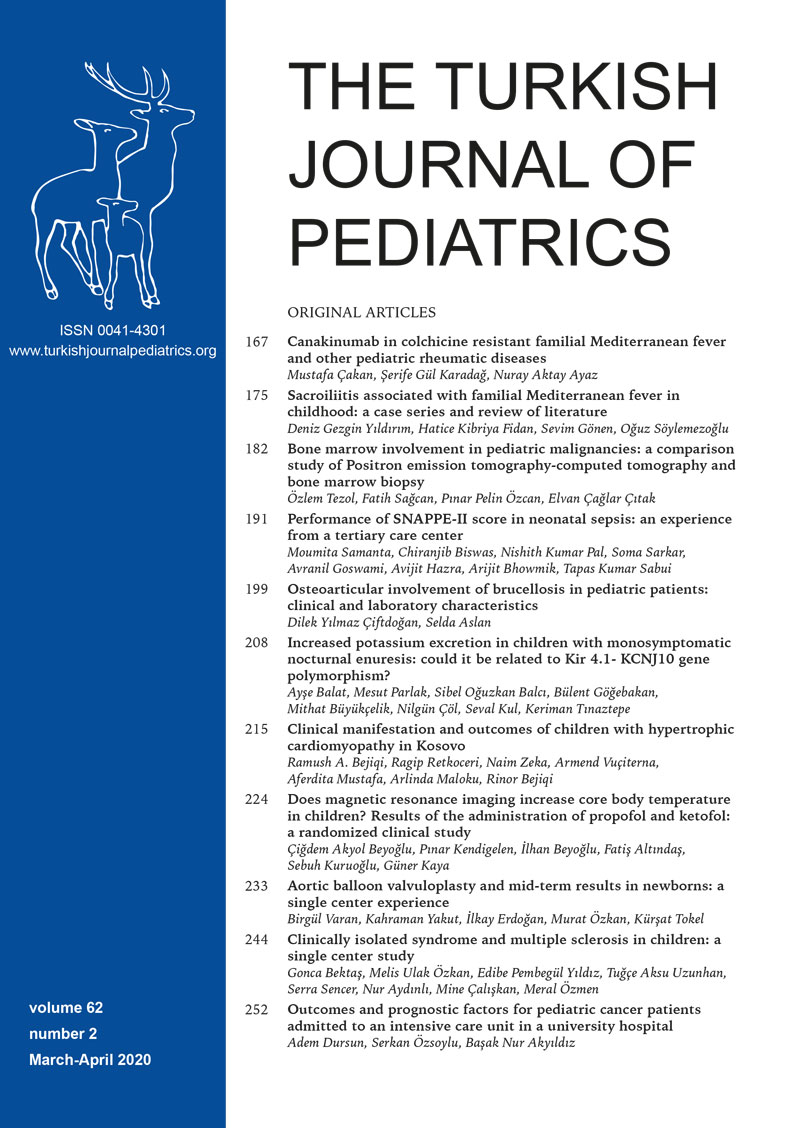Abstract
Background and Objectives. One way to measure arterial stiffness is the ambulatory arterial stiffness index (AASI), which is the relationship between diastolic and systolic ambulatory blood pressure (BP) over 24-hours.
Methods. We studied the difference in AASI between obese and lean children. AASI was calculated from 24- hour ambulatory blood pressure monitoring in 53 obese children (33 girls) and compared with age-matched 42 healthy subjects (20 girls). Hypertension was defined according to the criteria of the American Heart Association. To evaluate inflammation, the blood level of high-sensitive C-reactive protein was measured.
Results. The mean age was 10.6 ± 2.83 years in obese children and 11.3 ± 3.17 years in healthy subjects. Hypertension was determined in three (5.6%) obese children. The median heart rate-SDS, pulse pressure and blood pressure values did not differ between the two groups. The mean AASI was significantly higher in obese children compared to healthy subjects (0.42 ± 0.15 vs. 0.29 ± 0.18, p < 0.001). AASI significantly correlated with nighttime SBP-SDS, nighttime SBP-load, systolic and diastolic nocturnal dipping, with no independent predictor.
Conclusion. This study confirms that AASI is increased in obese children. AASI calculation is a useful, costeffective, and an easy method to evaluate arterial stiffness. Early detection of increased arterial stiffness can help clinicians come up with preventive measures in the management of patients.
Keywords: arterial stiffness, blood pressure measurement, cardiovascular risk, children, obesity
Copyright and license
Copyright © 2020 The Author(s). This is an open access article distributed under the Creative Commons Attribution License (CC BY), which permits unrestricted use, distribution, and reproduction in any medium or format, provided the original work is properly cited.














